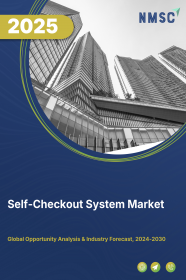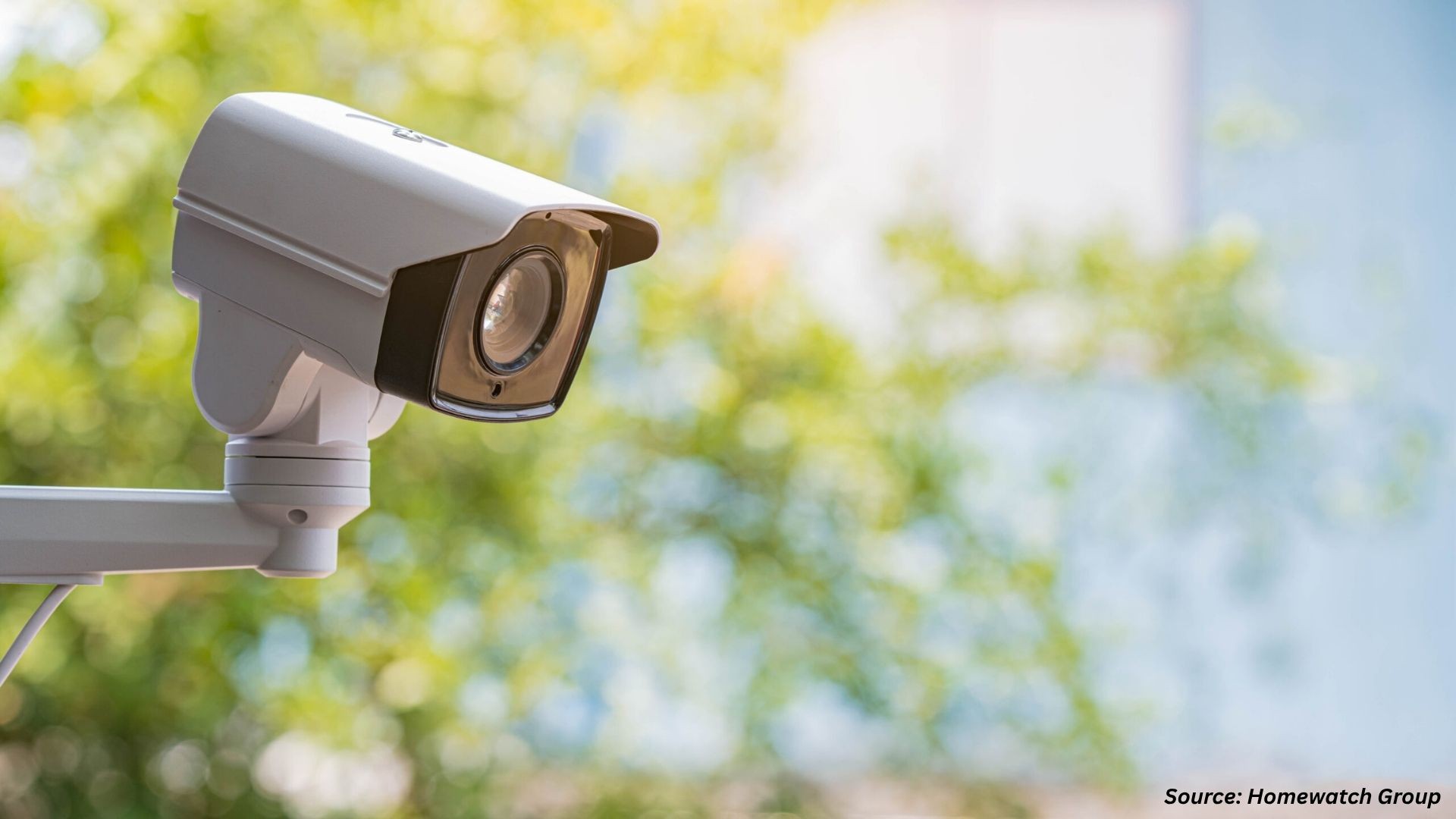
Self-Checkout System Market by Type (Fixed and Mobile), by Offering (Hardware, Software, and Services), by Model Type (Cash Model and Cashless Model), by Mounting Type (Stand-Alone, Wall-Mounted, and Countertop), by Organization Size (Small and Medium Sized Enterprises and Large Enterprises), by Application (Retail, Financial Services, Entertainment, Travel, Healthcare, and Others), and Others-Global Opportunity Analysis and Industry Forecast 2024-2030
Market Definition
The Self-Checkout System Market size was valued at USD 4.54 billion in 2023 and is predicted to reach USD 11.50 billion by 2030 with a CAGR of 14.2% from 2024-2030.
Self-checkout systems are also known as assisted checkouts or self-service checkouts. It provides a mechanism for customers to complete their own transactions from a retailer without the help of store employees. It assists customers with shopping and facilitates digital and contactless payments. It is a superior replacement for the traditional cashier staff to provide flawless customer service 24/7. The self-checkout system automatically scans the products and records the products' codes and their price.
While making the process smooth and seamless and provides greater accuracy, systematical recording of data, time-saving, reduction in labor cost, and better in-store optimization. The self-checkout system encourages sanitation, hygiene and reduces the chances of contamination. This approach has been deployed in numerous sectors such as food chains, supermarkets, healthcare sectors, retail shops, and others that enable them in speeding up their processes.
Market Dynamics and Trends
The rapid surge in global electronic payment transactions via smartphones contributes significantly to the increased utilization of self-checkout systems, thereby fostering substantial growth for the market. According to the Capgemini, nearly 45% of consumers frequently use mobile wallets to make payments and global B2B non-cash transactions and the self-checkout market will increase to nearly 200 billion transactions by 2025.
Furthermore, the self-checkout system is driven by the growing consumer convenience and efficiency in shopping experiences that offers a faster and more convenient way to pay for goods, reducing wait times and providing greater control over the checkout process.
However, the high initial cost associated with self-checkout systems is restraining the market growth. On the contrary, the integration of cloud-based and artificial intelligence (AI) in self-checkout solutions as it influenced industries to implement technologies which accepts contactless and mobile payments securely.
In 2024, Diebold Nixdorf introduced a new AI-based checkout solution to address shrinkage in the retail sector. The Vynamic Smart Vision I Shrink Reduction system is designed to mitigate shrink risks at self-checkout stations while enhancing the overall shopping and employee experiences.
Market Segmentations and Scope of the Study
The self-checkout system market is classified on the basis of type, offering, model type, mounting type, organization size, application, end user, and region. On the basis of type, the market is divided into fixed and mobile. On the basis of offering, the market is classified into hardware, software, and services. On the basis of model type, the market is classified into cash model and cashless model. On the basis of mounting, the market is segmented into stand-alone, wall-mounted and countertop. On the basis of organization size, the market is classified into small and medium sized enterprises and large enterprises. On the basis of application, the market is divided into retail, financial services, entertainment, travel, healthcare, and others. On the basis of end user, the market is divided into supermarkets, hypermarkets and department stores, convenience stores, and others. Regional breakdown and analysis of each of the aforesaid segments includes regions comprising of North America, Europe, Asia-Pacific, and Rest of the World (RoW).
Geographical Analysis
North America holds the predominant share of self-checkout system market during the forecast period. This is attributed to factors such as increased penetration of automation across retail and healthcare industries to drive the market connectivity and digitization.
In 2022, Couche-Tard implemented AI-based self-checkout systems from a Canadian manufacturer across its 7,000+ stores in Canada and the U.S. These touchless checkout systems accelerate customer checkout times by up to 4 times, ensuring efficiency and accuracy.
In addition, the presence of major players in this region such as Toshiba Global Commerce Solutions, NCR Voyix Corporation, and Diebold Nixdorf Inc., among others boosts the market growth in this region. For instance, in January 2024, NCR Voyix upgraded its self-checkout system to adapt to the rise in unattended payments. It offers seamless transitions between assisted and self-checkout lanes by integrating technologies such as barcode scanning, computer vision, and RFID. It enhances the shopping experience, reducing friction for shoppers and promoting inclusivity at checkout.
On the other hand, Asia-Pacific is expected to show a steady rise in self-checkout market as the region is driven by the increasing financial sector across the region especially in the emerging countries. As it facilitates seamless payment experiences, enhancing security measures, providing valuable consumer insights, and driving innovation in technology and operations. According to the India Brand Equity Foundation (IBEF), Indian Fintech industry is projected to reach a value of USD 150 billion by 2025, making it the third-largest FinTech ecosystem worldwide.
Moreover, as per the Boston Consulting Group (BCG) forecasts, digital payments are expected to constitute 65% of all payments by 2026. In addition, the rapidly rising self-checkout systems at the retail stores due to its convenience and integrated with AI-based technology propels the demand for the market.
For instance, Telpo launched a self-checkout terminal featuring facial recognition, meeting the rising demand for biometrics-enabled kiosks. The AI Vision checkout terminal utilizes AI and computer vision to identify items automatically during checkout. This enables businesses to implement self-service checkouts, accepting payments via QR codes, NFC cards, or facial recognition. The company’s technology serves 32,000 retail locations across China.
Competitive Landscape
The self-checkout system market comprising of various market players such as NCR Corporation, Toshiba Global Commerce Solutions, Diebold Nixdorf, Fujitsu Limited, IBM Corporation, Zebra Technologies, Pan-Oston, ITAB Shop Concept AB, SlabbKiosks, Olea Kiosks Inc., CBE Ltd., ECR Software Corporation, IER Group, NEXCOM International Co., Ltd., KIOSK Information Systems., and others. These market players are adopting various strategies such as collaborations and product launch across various regions to maintain their dominance in the self-checkout system market.
For instance, in January 2023, Toshiba Global Commerce Solutions collaborated with PopID to provide biometric-enabled point-of-sale and self-checkout systems, marking a significant partnership in the integration of PopPay into Toshiba's front-end solutions. This collaboration aims to enhance customer experiences by enabling facial verification for payments and loyalty programs, leveraging artificial intelligence technology for secure and personalized interactions at checkout.
Moreover, in January 2022, Qingdao CCL Technology Co. Ltd. collaborated with Tusson Ltd. to install self-checkout machines in Belarus. Through this collaboration, companies aimed to offer self-checkout solutions for the retail sector to ensure maximum throughput at the point of sale with optimum user experience.
Key Benefits
-
The self-checkout system market report provides a quantitative analysis of the current market and estimations through 2024-2030 that assists in identifying the prevailing market opportunities to capitalize on.
-
The study comprises a deep dive analysis of the self-checkout system market trend including the current and future trends for depicting the prevalent investment pockets in the market.
-
The information related to key drivers, restraints, and opportunities and their impact on the self-checkout system market is provided in the report.
-
The competitive analysis of the market players along with their market share in the self-checkout system market.
-
The SWOT analysis and Porters Five Forces model is elaborated in the study.
-
Value chain analysis in the market study provides a clear picture of the stakeholders’ roles.
Key Market Segments
By Type
-
Fixed
-
Mobile
By Offering
-
Hardware
-
Software
-
Services
By Model Type
-
Cash Model
-
Cashless Model
By Mounting Type
-
Stand-Alone
-
Wall-Mounted
-
Countertop
By Organization Size
-
Small & Medium Enterprise
-
Large Enterprise
By Application
-
Retail
-
Financial Services
-
Entertainment
-
Travel
-
Healthcare
-
Others
By End User
-
Supermarkets
-
Hypermarkets
-
Department Stores
-
Convenience Stores
-
Others
By Region
-
North America
-
The U.S.
-
Canada
-
Mexico
-
-
Europe
-
The UK
-
Germany
-
France
-
Italy
-
Spain
-
Denmark
-
Netherlands
-
Finland
-
Sweden
-
Norway
-
Russia
-
Rest of Europe
-
-
Asia-Pacific
-
China
-
Japan
-
India
-
South Korea
-
Australia
-
Indonesia
-
Singapore
-
Taiwan
-
Thailand
-
Rest of Asia-Pacific
-
-
RoW
-
Latin America
-
Middle East
-
Africa
-
REPORT SCOPE AND SEGMENTATION:
|
Parameters |
Details |
|
Market Size in 2023 |
USD 4.54 Billion |
|
Revenue Forecast in 2030 |
USD 11.50 Billion |
|
Growth Rate |
CAGR of 14.2% from 2024 to 2030 |
|
Analysis Period |
2023–2030 |
|
Base Year Considered |
2023 |
|
Forecast Period |
2024–2030 |
|
Market Size Estimation |
Billion (USD) |
|
Growth Factors |
|
|
Countries Covered |
28 |
|
Companies Profiled |
15 |
|
Market Share |
Available for 10 companies |
|
Customization Scope |
Free customization (equivalent up to 80 working hours of analysts) after purchase. Addition or alteration to country, regional, and segment scope. |
|
Pricing and Purchase Options |
Avail customized purchase options to meet your exact research needs. |
KEY PLAYERS
-
NCR Corporation
-
Toshiba Global Commerce Solutions
-
Diebold Nixdorf
-
Fujitsu Limited
-
IBM Corporation
-
Zebra Technologies
-
Pan-Oston
-
ITAB Shop Concept AB
-
SlabbKiosks
-
Olea Kiosks Inc.
-
CBE Ltd.
-
ECR Software Corporation
-
IER Group
-
NEXCOM International Co., Ltd.
-
KIOSK Information Systems.




















 Speak to Our Analyst
Speak to Our Analyst
























